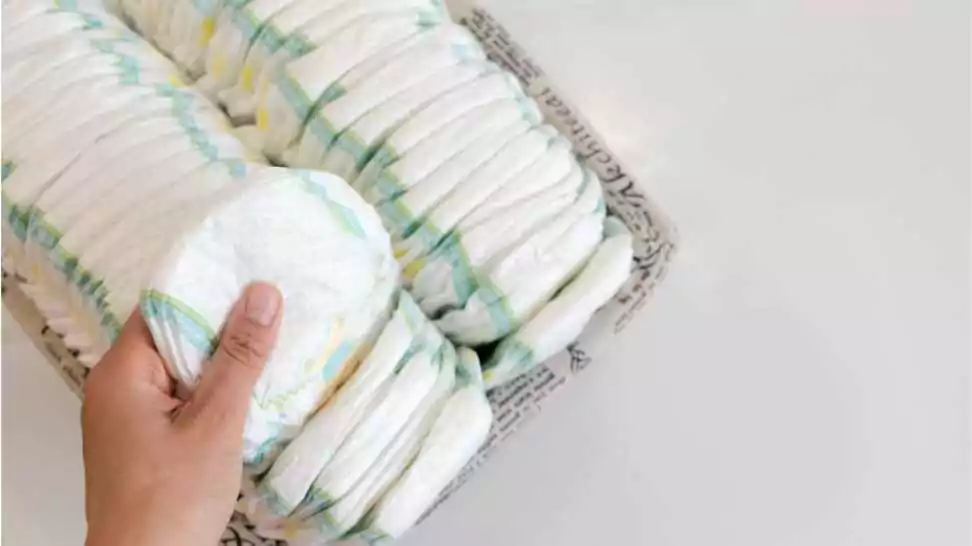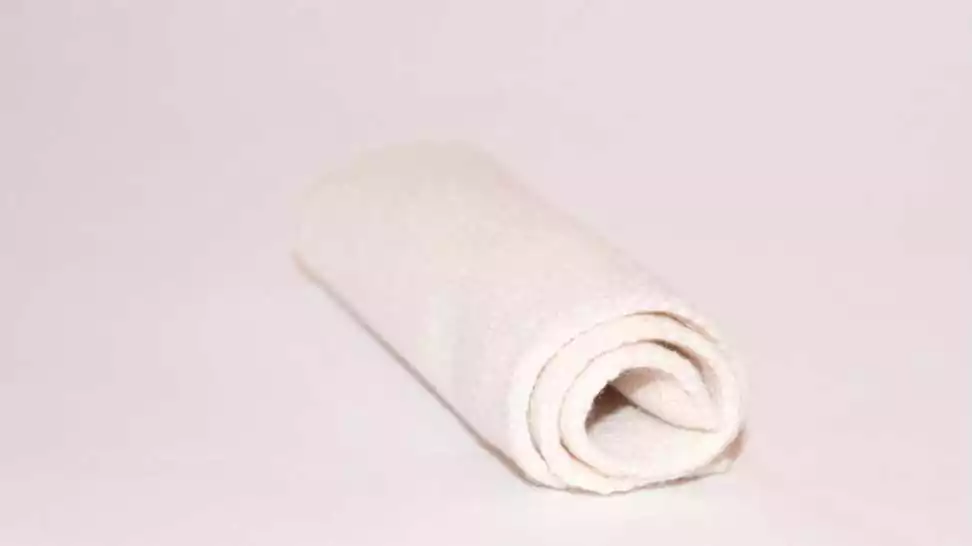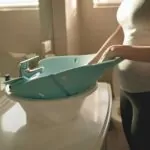How To Use Diaper Liners For Effective Baby Care?

For new parents, the realm of baby care can often seem daunting, with diaper liners being a key element in your baby care toolkit. These simple yet effective products are designed to streamline your diapering routine and enhance your baby’s comfort. But how to use diaper liners, what are they, and what makes them so essential?
Diaper liners are thin layers that sit inside a baby’s diaper, primarily to facilitate easier changes and extend the life of the diaper. They are particularly helpful in managing solid waste, allowing for simpler disposal and cleaning, and keeping the diaper less soiled.
The advantages of diaper liners go beyond ease of cleaning. They provide a moisture barrier, crucial for preventing diaper rash and keeping your baby comfortable. For those using cloth diapers, liners are invaluable in easing the washing process and protecting the diapers from stains.
There are two main types of liners: disposable and cloth. Disposable liners, convenient for on-the-go use, are single-use and can be easily thrown away. On the other hand, cloth liners offer an eco-friendly, reusable option that can be more cost-effective over time. Each type has unique benefits, and this guide aims to thoroughly explore them to help you make informed decisions for your baby’s comfort and health.
1 Understanding Diaper Liners
After establishing the basic idea and benefits of diaper liners in the introductory section, it’s crucial to delve deeper into the types available and their respective advantages and drawbacks. This understanding is key to making an informed decision that suits your lifestyle, budget, and, most importantly, your baby’s needs.
Different Types of Diaper Liners

Disposable Liners:
These liners are designed for one-time use. Typically made from a thin layer of cloth-like material, disposable liners are placed inside the diaper to collect solids. Their primary appeal lies in their convenience – after use, they can be removed and disposed of, reducing the mess involved in diaper changes.
Cloth Liners:
As a reusable alternative, cloth liners are made from various fabrics like cotton, bamboo, or fleece. They are placed in the diaper in the same way as disposable liners but, instead of being thrown away, they are washed and reused. Cloth liners are an eco-friendly choice and are often preferred by those looking to reduce waste.
Pros and Cons of Each Type
When choosing between disposable and cloth diaper liners, several factors come into play, including environmental impact, cost-effectiveness, ease of use, and comfort for the baby.
Environmental Impact
- Disposable Liners: While convenient, disposable liners contribute to landfill waste. If environmental sustainability is a priority for you, this could be a significant drawback.
- Cloth Liners: Cloth liners are an eco-friendly choice. By being washable and reusable, they greatly reduce waste, aligning with a more sustainable lifestyle.
Cost-Effectiveness
- Disposable Liners: Initially, disposable liners may seem economical. However, over time, the cost can add up as they need to be purchased regularly.
- Cloth Liners: The upfront cost of cloth liners can be higher, but they offer better long-term savings. Their durability and reusability mean fewer repeat purchases.
Ease of Use
- Disposable Liners: These liners are often favoured for their convenience. They are easy to use, especially when travelling or on the go, and simplify the cleaning process.
- Cloth Liners: While cloth liners require an extra step of laundering, modern washing machines and detergents have made this process relatively straightforward and efficient.
Comfort for the Baby
- Disposable Liners: Some babies might find disposable liners less comfortable due to their texture or the chemicals used in manufacturing them.
- Cloth Liners: Cloth liners are generally gentler on a baby’s skin. The use of natural fibres like cotton or bamboo ensures breathability and reduces the risk of irritation.
2 How to Use Disposable Diaper Liners

Disposable diaper liners are a popular choice among parents for convenience and ease of use. To make the most of these liners and ensure your baby’s comfort, it’s important to understand the right way to use them. This section offers a guide on selecting the correct size and type, placing them properly in diapers, disposing of them efficiently, and dealing with heavy soiling.
Choosing the Right Size and Type
Selecting the appropriate size and type of disposable liner is the first step in ensuring its effectiveness. Liners come in various sizes and materials, and the right choice largely depends on your baby’s size and skin sensitivity.
- Size: Make sure the liner fits well within the diaper without bunching up. A too-big liner can be uncomfortable for the baby, while one too small won’t provide adequate coverage.
- Material: Opt for liners that are free from fragrances, dyes, and chemicals to reduce the risk of skin irritation. Some liners are also designed with sensitive skin in mind, using softer materials.
Step-by-Step Guide to Placement in Diapers
Proper liner placement within the diaper is crucial for maximising its benefits. Here’s how to do it:
- Lay the Diaper Flat: Open the diaper and lay it flat on a changing table or a clean surface.
- Place the Liner: Take the disposable liner and lay it flat inside the diaper, ensuring it covers the area where the majority of waste is likely to be.
- Adjust for Fit: Make sure the liner is centred and doesn’t overlap the edges of the diaper. Adjust it to fit snugly, especially around the leg cuffs.
Tips for Easy Disposal
Disposing of a used liner should be hassle-free while being environmentally responsible.
- Remove Carefully: Lift the liner gently from the diaper to avoid spilling any contents.
- Dispose Responsibly: While some liners are labelled as flushable, it’s generally recommended to dispose of them in the trash to avoid plumbing issues.
- Sanitize Hands: Always wash your hands thoroughly after handling a used diaper liner to maintain hygiene.
Handling Heavy Soiling
Dealing with heavy soiling is one of the biggest challenges of diapering. Disposable liners can make this task easier.
- Preparation: Have a disposal bag ready before you start the diaper change.
- Lift and Dispose: If the liner is heavily soiled, carefully lift it from the diaper and dispose of it directly into the bag.
- Check the Diaper: Sometimes, soiling may seep past the liner. Check the diaper thoroughly and change it if necessary.
3 How to Use Cloth Diaper Liners

Cloth diaper liners offer an eco-friendly and cost-effective alternative to disposable liners. Using them correctly not only ensures comfort for your baby but also maximizes their lifespan and effectiveness. This section will guide you through the process of selecting, using, and maintaining cloth diaper liners.
Selecting Appropriate Materials and Sizes
The right material and size of cloth diaper liners can greatly influence your baby’s comfort and the liner’s effectiveness.
- Materials: Cloth liners come in a variety of materials such as cotton, bamboo, or fleece. Each has its unique benefits—cotton is highly absorbent, bamboo is soft and antibacterial, and fleece is excellent at keeping moisture away from the skin.
- Size: Similar to disposable liners, ensure the cloth liner fits well within the diaper. It should be large enough to cover the main area without causing bulkiness or discomfort.
Steps for Inserting Cloth Liners in Diapers

Proper placement of cloth liners is crucial for preventing leaks and ensuring comfort.
- Prepare the Diaper: Open the cloth diaper and lay it on a flat surface.
- Place the Liner: Position the cloth liner inside the diaper, aligning it to cover the area where absorption is most needed.
- Adjust for Fit: Make sure the liner is flat and smooth, without any folds or creases, to avoid discomfort or chafing.
Washing and Care Instructions
Maintaining cloth diaper liners is straightforward but requires attention to detail to ensure hygiene and longevity.
Pre-wash Routine: Rinse the liners in cold water before the main wash to remove any solid waste and prevent staining.
Detergents and Washing Cycles:
- Choose a gentle, fragrance-free detergent to avoid irritating your baby’s skin.
- Use a regular washing cycle with warm water to effectively clean the liners.
Drying and Storage Tips:
- Air dry the liners when possible to preserve their quality and extend their lifespan.
- Store them in a dry, clean place until their next use.
Troubleshooting Common Issues with Cloth Liners
Cloth liners are durable, but you may encounter some common issues.
- Staining: Sun-drying can help naturally bleach out stains without damaging the fabric.
- Odours: Regular washing and occasional soaking in a vinegar solution can help eliminate odours.
- Reduced Absorbency: Avoid fabric softeners, which can coat the fibres and reduce absorbency. Stripping the liners occasionally can restore their absorbency.

4 Tips for Maximising Efficiency
While diaper liners, both disposable and cloth, can significantly ease the diapering process, maximising their efficiency involves smart strategies. This section provides practical tips on balancing cost and environmental concerns, saving time, effectively combining liners with different diaper types, and knowing when liners are most beneficial.
Balancing Cost and Environmental Impact
- Bulk Purchases and Subscriptions: For disposable liners, consider buying in bulk or subscribing to a service to save money. For cloth liners, investing in a durable, high-quality set can be cost-effective in the long run.
- Eco-Friendly Options: Opt for biodegradable disposable liners to lessen environmental impact. Cloth liners inherently reduce waste, but choosing organic materials can further enhance their eco-friendliness.
Time-Saving Techniques for Busy Parents
- Prep in Advance: Have a stack of liners, either disposable or cloth, ready alongside your stack of diapers. Preparing everything in advance can streamline the changing process.
- Easy Access Storage: Keep liners in a convenient, easily accessible place near your diaper changing station to save time.
How to Combine Liners with Different Types of Diapers
- For Disposable Diapers: Liners can be used with disposable diapers for easier clean up of solid waste, especially during travel.
- For Cloth Diapers: Liners, especially fleece or bamboo ones, can be a great addition to cloth diapers, providing an extra layer of protection and making clean up easier.
Understanding When to Use Liners
- During Teething or Illness: Babies often have more acidic stools when teething or ill, which can cause diaper rash. Using a liner during these times can protect their skin.
- Night time Use: For extended wear, such as overnight, liners can provide extra absorbency and keep moisture away from the baby’s skin.
- When Using Rash Creams: If you need to use creams or ointments for diaper rash, a liner can protect the diaper from getting coated with the product, which can affect its absorbency.
5 Wrapping Up
Choosing the right diaper liner comes down to a balance of personal preference, lifestyle, and your baby’s needs. Disposable liners offer unmatched convenience, making them a great choice for on-the-go situations or when ease of use is a priority. On the other hand, cloth liners are an environmentally friendly and cost-effective solution for those who are comfortable with an added laundry routine. Remember, what works best for one family may not necessarily be the ideal choice for another.
Community Q&A
About This Article
This article has been viewed 96 times.



